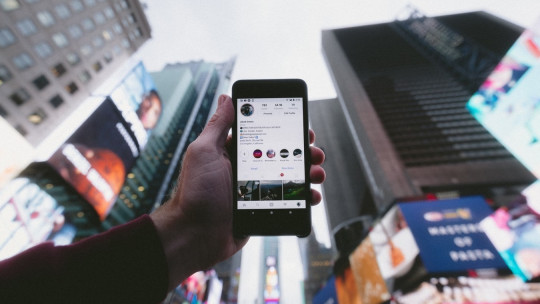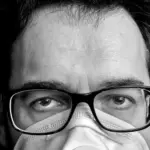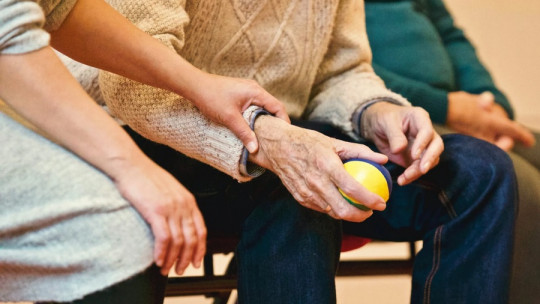It is estimated that, in 2017, there were more than 2.7 billion people who used social networks. This means that, no more and no less, 37% of the world’s population feels some interest in sharing their tastes, hobbies and private life with the rest of humanity.
Although each person is free to publish what they want, the possibility of sharing daily experiences through social networks makes the line between public and private life become too narrow, leading to a new mental health condition known as privacy fatigue
What is privacy fatigue?
Privacy fatigue is becoming a new psychological disorder that, although At the moment it is not included in any evaluation and diagnosis manual has been observed and manifests itself in a large number of people.
A research group made up of psychologists from the Ulsan National Institute of Science and Technology in South Korea has evaluated the way in which social network users face the thin line that divides what is private from what is public.
After a long time of research and evaluation, they noticed that a large number of users experienced symptoms similar to those of psychological fatigue caused by excessive and constant worry about the threats and risks involved. the lack of privacy on the networks
They gave this psychological state the name privacy fatigue, characterized by cause a feeling of psychological fatigue related to the person’s lack of skills to effectively manage their privacy and intimate information on the Internet and social networks.
The main theory of these researchers is that, although it may vary in intensity, privacy fatigue affects the majority of people who are active users of social networks. The reason is that some users experience the obligation or need to constantly separate between private information and information that may be public or shared with the rest of the world, with the aim of protecting their privacy.
This constant “state of alert” can cause the aforementioned privacy fatigue, which also causes people themselves to end up letting their guard down due to fatigue and generates a feeling of frustration.
Some situations that can exemplify this type of privacy fatigue are those moments in which we are not sure whether to publish a photo or publication on the networks or not since, at the same time, not knowing how to clearly draw the line between public and private generates a feeling of concern or concern in us when we think that we are not exposing too much.
What have studies discovered?
Thanks to research carried out by the Ulsan group of psychologists, it is hypothesized that there are two types of reactions to privacy conflict.
On the one hand, it occurs in those who are worried about being too exposed but have the necessary skills to face it so they do not feel fatigued and They tend not to disseminate certain types of personal information on networks
On the other hand, there are other types of social network users who, in addition to feeling worried about putting their privacy at risk, do not have sufficient tools to differentiate between what information is considered personal or public, which is why they end up losing their will. to control said separation.
This psychological fatigue causes affected people to share personal content on social networks without thinking about its nature. The main cause is that privacy fatigue generates such psychological exhaustion that it makes people forget the need to protect their private life and the risks involved in excessive public exposure
The privacy paradox
As a consequence of this fatigue, a phenomenon known as the “privacy paradox” occurs. This concept refers to the fact that social network users maintain the habit of posting personal information despite concerns about your privacy
This paradox does not only have to do with privacy fatigue, but is based on many other factors or internal psychological agents such as the need for self-affirmation and the need to feel that one is part of a group of people or community.
Privacy has traditionally been understood as a zone or area of each person’s intimate life, which takes place in a private and usually confidential space. However, this notion of privacy has changed over the years and the emergence of social networks.
A few years ago it would be unthinkable to publish a photograph in which we are in the privacy of our home. But with the rise of social networks private life has become a tool for exposure to the world, through which we can express how we feel or how proud we are of carrying out any type of activity.
This means that each person’s individual identity is formed around a community identity, which reinforces (or sometimes punishes) said identity through the number of likes given to a publication. As a consequence, it is increasingly difficult to establish a boundary between what is public and what is personal or private.
What symptoms does it present?
Finally, the research team that proposed the term privacy fatigue has established a series of symptoms that develop as the fatigue caused by this constant worry progresses.
Initially, the symptoms appear in the same way as they do in other types of fatigue. The person is so overloaded by the demands that their own concern for privacy demands that they ends up triggering continuous psychological exhaustion
This feeling of permanent psychological exhaustion gradually increases until turns into frustration, hopelessness or disappointment The person experiences a sensation similar to learned helplessness, since he feels that nothing he does will be able to avoid being exposed through social networks.
Therefore, as occurs with the process of defenselessness, the person stops fighting to maintain this privacy, which means that they stop worrying about what content published on social networks may be considered public or, on the contrary, too private.
Is there any type of treatment?
Because it is a psychological disorder yet to be determined, there are no specific treatment or intervention guidelines. However, it is recommended that all those people who feel overwhelmed by this constant worry Go to a psychology professional for an assessment and possible individualized intervention









